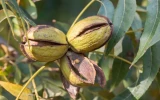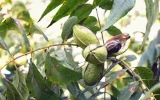How Many Pounds of Pecans Per Tree? (What to Expect)
Pecan trees exhibit an alternate bearing cycle, which can affect the number of harvestable pecans. So, you might be wondering how much you can expect to harvest per tree. There are some general guidelines to help you estimate your yield. In this article, we'll give you an idea of how many pounds you can expect from a pecan tree and the factors that affect your potential yield from these trees.
You can expect your pecan tree to produce 50–150 pounds of pecans per year, depending on the variety and growing conditions. However, not all pecan trees will produce the same amount of pecans each year due to alternate bearing cycles. A mature pecan tree, in a good year, can produce 200–250 pounds of pecans.
If you want to maximize the yield of your pecan trees, you may want to consider factors such as the variety of pecan trees, planting distances, irrigation, and grafting. Let's see below how you can further boost the nut yield from a single pecan tree.
Summary
- A pecan tree has an expected yield of 50–150 pounds of pecans per year. When they mature, they can produce up to 200–350 pounds of pecans annually.
- Factors such as sun exposure, soil pH, fertilization, water supply, and the use of the right equipment in maintaining and harvesting can affect the amount of pecan yield from a single tree.
- If you want to maximize the yield of your pecan trees, make sure to choose the right variety, plant in the right location while keeping in mind proper spacing, provide proper irrigation, and lastly, consider planting grafted pecan trees.
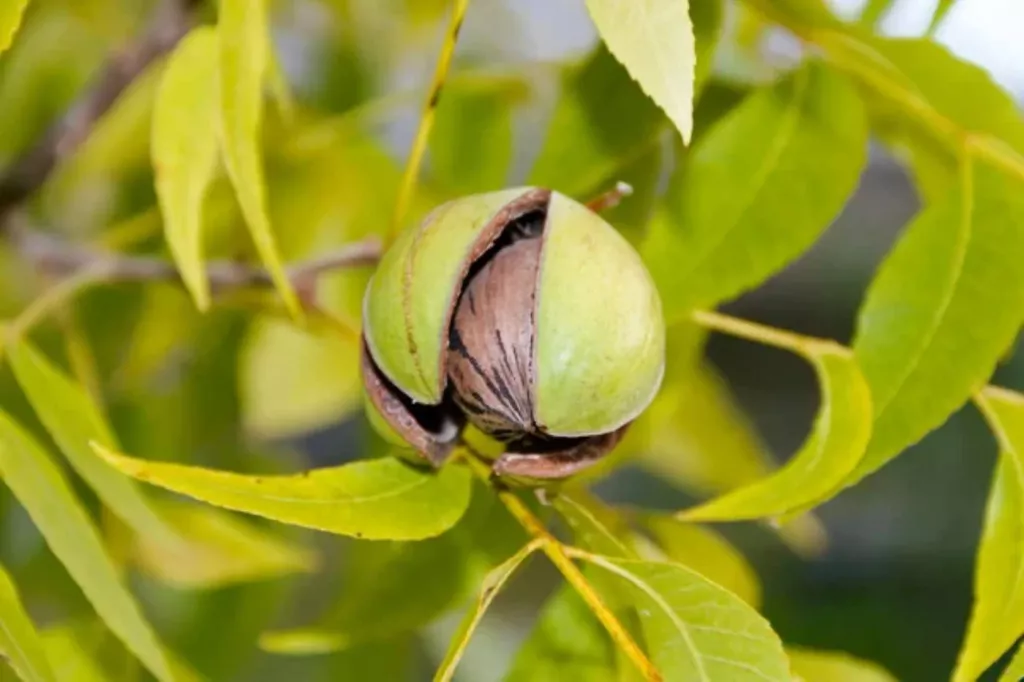
On this page:
Optimal Yield From a Single Pecan Tree
Generally, a mature pecan tree can produce anywhere from 50 to 150 pounds of pecans per year, depending on the variety and growing conditions.
However, not all pecan trees will produce the same amount of pecans. In fact, pecan trees do not produce abundantly every year because they exhibit a phenomenon called an alternate bearing cycle, wherein they produce a heavy crop one year and a lighter one the following year.
While pecan trees can start producing nuts around 10 years, they take an average of 20 - 25 years before they reach maturity.
Once the tree reaches maturity, it can produce 200–250 pounds of pecans in a good year. But this can be affected by the alternate bearing cycle and other factors such as soil quality, climate, and pest and disease management.
A pecan tree can give you a bountiful supply of harvests for about 75 to 100 years on average.
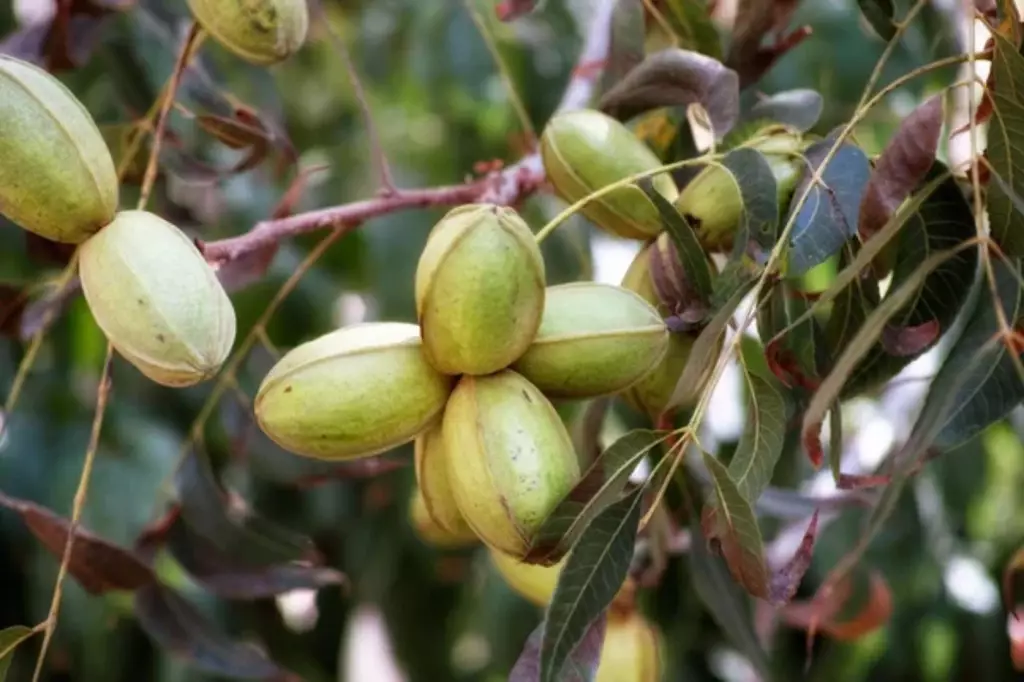
When it comes to harvesting pecans, you may need some equipment, such as a shaker, a sweeper, and a harvester. The shaker is used to shake the tree, causing the pecans to fall to the ground.
The sweeper is then used to gather the pecans into rows, making it easier to collect them. Finally, the harvester is used to pick up the pecans and transfer them to a collection bin.
Collecting pecans can be a time-consuming process, so it is best if you could do it as soon as possible after the pecans have fallen to the ground. Leaving them on the ground for too long can result in spoilage or damage by pests.
Growing pecans can be a profitable business. An acre of pecan trees can yield 1,000 pounds of pecans, which are priced at $1.79 per pound. However, the initial investment can be high, and it can take several years before you start seeing a return on your investment.
Pecan trees are a great addition to any garden or farm, but they require a lot of patience and care. It can take up to 10 years for a pecan tree to start producing nuts, especially if they are grown from seeds, so you may want to have realistic expectations.
However, grafted pecans can start their nut-bearing cycles within 4 - 8 years of planting. So if you want faster-growing pecan trees, you may opt for the grafted varieties.
Factors that Affect Pecan Yield

Pecan trees require full sun exposure
If your trees are not getting enough sunlight, it can result in lower yields. You might want to make sure to plant your trees in an area that receives at least 6 hours of direct sunlight per day.
The soil pH affects pecan yield
Pecan trees prefer slightly acidic to neutral soil with a pH between 6.0 and 7.0. If the soil pH is too low or too high, it can affect the tree's ability to absorb nutrients and result in lower yields.
Proper fertilization optimizes pecan yield
Pecan trees require nitrogen, phosphorus, and potassium, as well as other micronutrients. When fertilizing your trees, do it in accordance with their specific needs, and avoid over-fertilization, which can lead to excessive vegetative growth and lower yields.
Choose the correct fertilizer that contains a balanced amount of micronutrients and macronutrients intended for pecan trees such as a 10-10-10 fertilizer, a foliar spray, or an ammonium sulfate fertilizer.
Pecan trees require an adequate water supply
Pecan trees require consistent and adequate watering throughout the growing season. Lack of water during critical growth stages can result in lower yields. Strive to water your trees deeply and infrequently, rather than shallowly and frequently.
Pruning can make the trees healthier
Pruning maintains the health and productivity of pecan trees. Proper pruning helps to remove dead or diseased wood, improve air circulation, and promote new growth.
Make sure to prune your trees regularly, following the proper techniques and timing. Extensive pruning can help your tree to regain its strength to produce and can even interrupt the alternate-bearing process.
The use of proper equipment affects pecan yield
When maintaining and harvesting pecan trees, you must have the necessary tools, such as pruning shears, ladders, and harvesting equipment, to ensure that your trees are properly cared for and that you can harvest your crop efficiently.
For example, using a mechanical shaker to harvest the pecans can increase yield by up to 50% compared to handpicking. This is because mechanical shakers are able to shake the tree more vigorously, which results in more nuts falling to the ground.
Additionally, using a mechanical shaker is much faster and more efficient than handpicking, which can save time and labor costs.
4 Tips to Maximize Pecan Yield
Let's go over some of the most important factors that can help you optimize your pecan production.
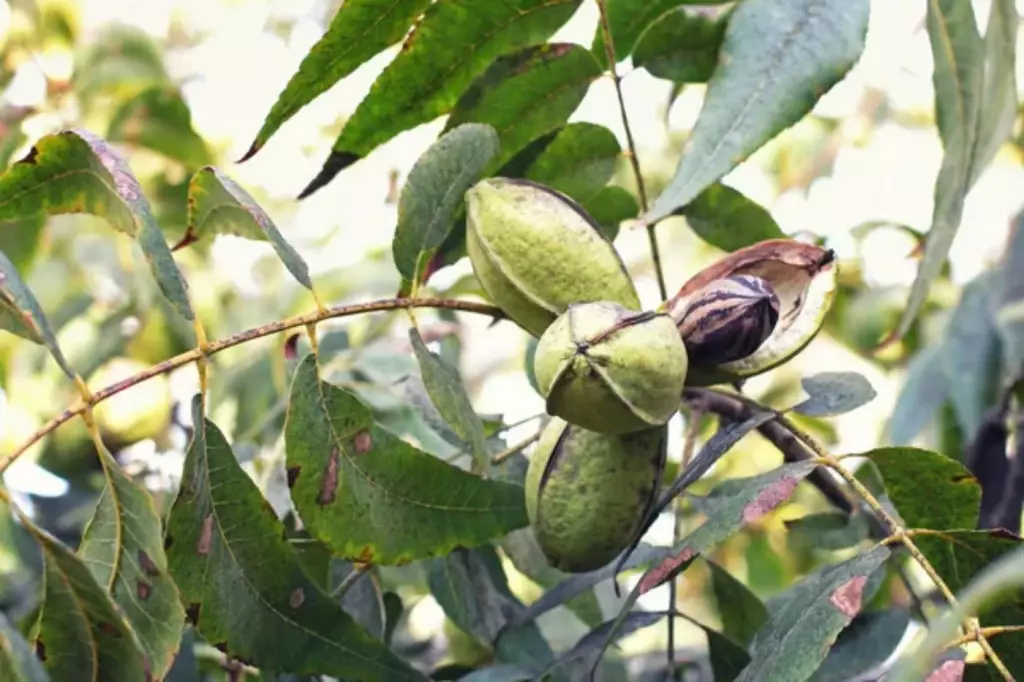
Choose the right variety of pecan tree
You may need to select a variety that is well-suited to your hardiness zone and climate. Some varieties are more resistant to pests and diseases, while others are more tolerant of drought conditions. You must also consider the size and growth rate of the tree, as well as its mature size and sun exposure requirements.
Plant in the right location with proper spacing
Pecan trees need well-drained soil with a pH between 6.0 and 7.0.
Pecan trees should be spaced at least 40 feet apart to allow for proper growth and development. If you are planting multiple rows of trees, you should space the rows at least 60 feet apart.
To know more about the ideal planting density of pecan trees per acre, check out this article: How Many Pecan Trees Should You Plant per Acre?
Provide proper irrigation
Pecan trees require a lot of water, especially during the growing season. They require 150 - 250 gallons of water per day for a fully mature pecan tree. This will encourage deep root growth and help your trees withstand drought conditions.
Consider planting grafted pecan trees
Grafting can improve the hardiness and disease resistance of your trees as well as increase their yield. Take note to graft your trees when they are still young, as older trees are less likely to accept grafts.

